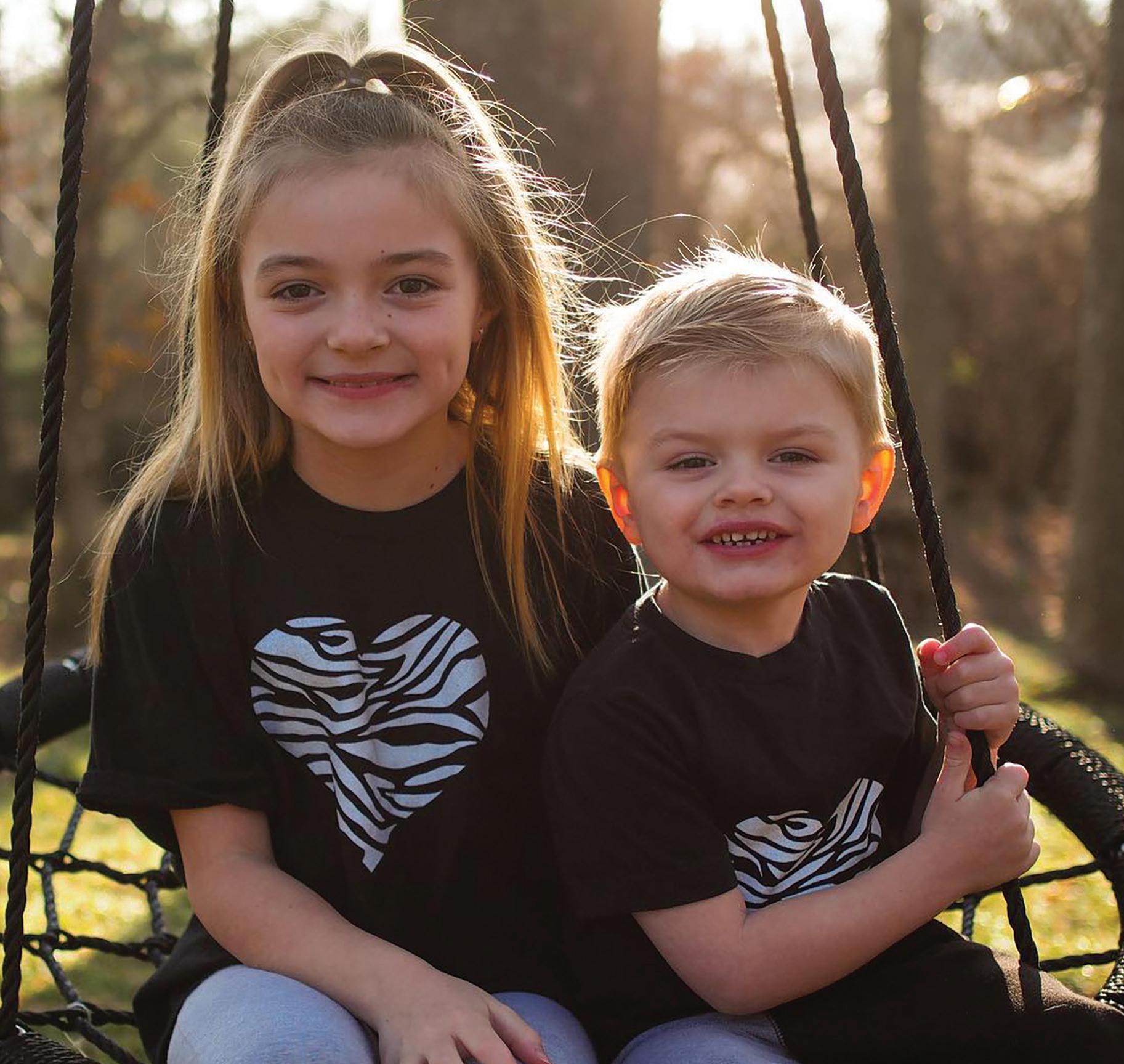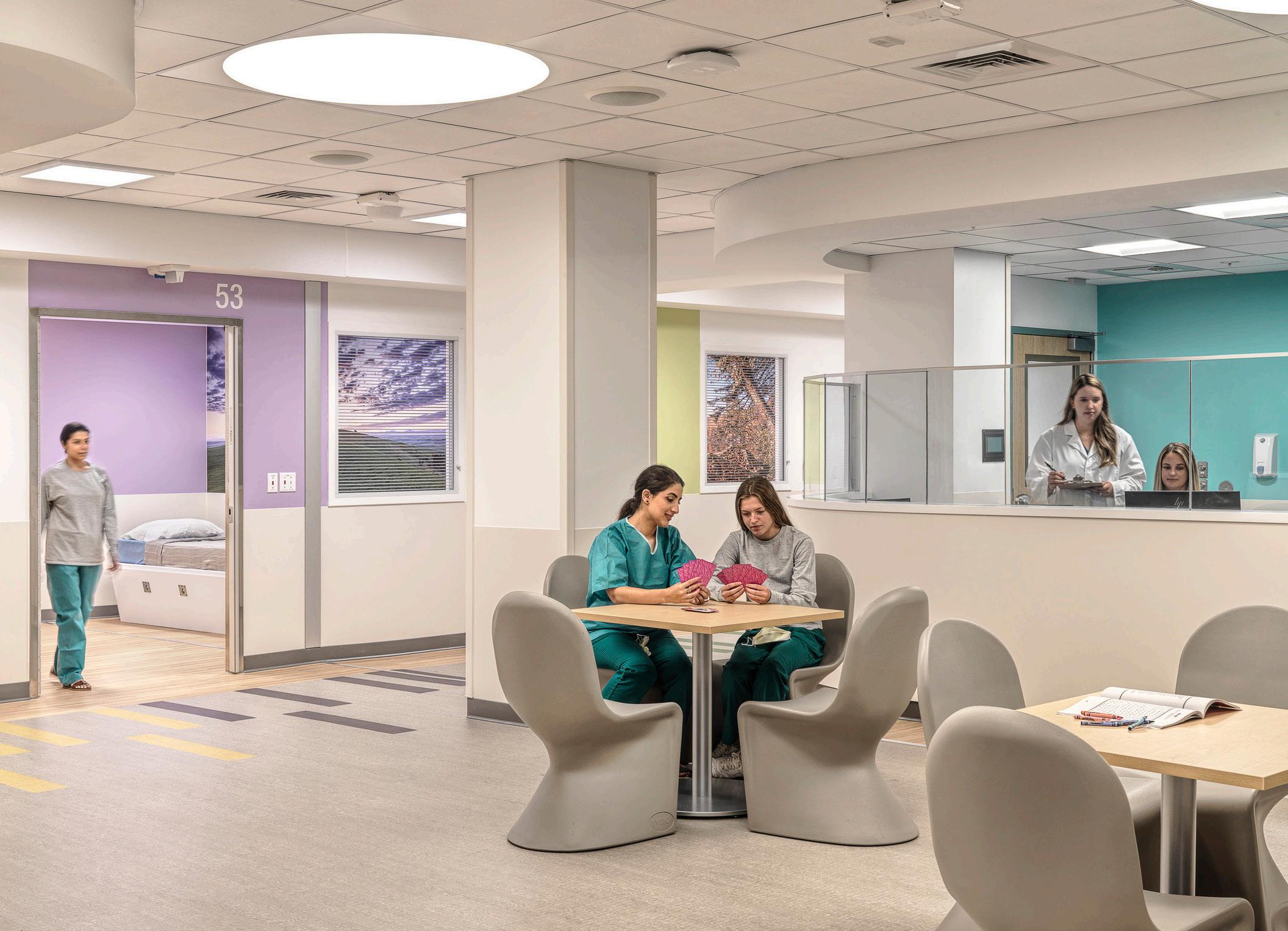
5 minute read
New Approach Will Seek Answers for Rare and Unknown Diseases
One family continues to advocate for their children living with shared rare condition
SiblingsLylaandKaydenwerebothdiagnosedwitharare disease that would benefit from more research to help shape statistics and remove the unknowns.
When you look at 4-year-old Kayden, you see a very busy third child who loves hockey, superheroes and his family. What you don’t see are the medical rarities he lives with every day.
Kayden’s mom, Kristin, notes her third pregnancy was textbook normal. Kayden was born at 38 weeks at a local hospital, but within 20 minutes of his birth, the delivery room was full of uncertainty. The nurse noticed a sacral dimple, an indentation on the lower back. Most sacral dimples are harmless and Kristin’s middle child, Lyla, was born with one too, so she and her husband quickly dismissed their concern. However, in Kayden’s case, the nurse saw another dimple above it. Kristin remembers the panic that took over. There was talk about their new baby needing surgery right away and that he might never be able to walk. The medical team took Kayden for an ultrasound on his spine and did an abrupt about-face — telling his parents it was fine and to follow up with his pediatrician in a couple of months.
His parents weren’t comfortable with waiting, especially after the panic that had occurred hours earlier, so they called their pediatrician, who consulted with Washington University pediatric neurosurgeon Jennifer Strahle, MD. She requested a brain and spine MRI. Kayden’s brain was cleared as normal, but the imaging test revealed he had a dermal sinus tract, a channel of scaly tissue found along the body anywhere between the nasal bridge and the tailbone, as well as a suspected tethered cord.
Kayden’s medical team at St. Louis Children’s knew he needed surgery, but COVID-19 delayed the procedure until he was 13 months old. The pre-op spine and brain MRI revealed Kayden had developed Chiari malformation type 1, a rare, complex brain abnormality that affects where the brain and spinal cord connect. Kayden’s parents were shocked to learn he was living with two rare conditions. By definition, rare diseases are those affecting just one in 2,000 people, or even fewer.
His surgery to remove the tract and release the tethered cord was successful. But it also left his mom with a lot of questions. “Until you’re thrust into the world of rare disease, you don’t understand the very limited knowledge that’s out there,” said Kristin.
Imagine her shock when her middle child and only daughter was also diagnosed with Chiari malformation in February 2023. Lyla, who is 8 years old, started having headaches in August 2022 and they aggressively got worse as the year progressed. Kayden’s medical team recommended she undergo an MRI to rule out something like Chiari malformation since it was so rare, but her results came back positive. Now, two of Kristin’s three children are being followed by the neurosurgery team at St. Louis Children’s to ensure they continue to thrive while monitoring their rare diagnoses.
St. Louis Children’s and Washington University are working together to create a groundbreaking approach to finding answers for kids like Kayden and Lyla. The Center for Rare, Undiagnosed and Genetic Diseases will be the first of its kind: a research center focused on increasing the diagnostic rate while simultaneously reducing the time spent waiting from diagnosis to therapy. The Center will be part of the Children’s Discovery Institute, driving pediatric discoveries to uncover what may now seem unfindable: lifesaving treatments and cures for childhood illnesses.
Families with children suffering from rare disorders spend years looking for answers. For Kristin, knowing this new Center will provide insight into the unknown for other families through research is one of the reasons she wants donors to understand the importance of making a gift: “Boosting knowledge and shaping statistics to help others is vital, and research is a huge part of that.”
To help more kids like Kayden and Lyla, visit StLouisChildrens.org/RareDiseaseCenter or scan the QR code.

Emergency Department Renovations Improve Patient Experience

A new look will make treating the community safer and more efficient
As the front door of St. Louis Children’s Hospital, the emergency department (ED) is the first stop for thousands of patients and their families each year. Centrally located in the heart of St. Louis, it’s also the only Level I Pediatric Trauma Center in the region.
In order to continue to provide safe and efficient, family-centered care and to better serve the community, St. Louis Children’s has begun a multi-phase ED renovation, partially funded by generous donors, that will create a welcoming environment while also establishing St. Louis Children’s as the preferred destination for pediatric emergency care.
The project will provide more space with state-of-the-art features that will result in faster and better treatment of patients needing emergency services. The first phase included converting some of the existing ED space into behavioral health–safe flex rooms, which increase efficiency as room utilization can be adjusted to accommodate an ever-changing patient population. The second phase, which began in December 2022, includes the relocation of the current outpatient pharmacy that sits adjacent to the ED to create a larger physical footprint for patients and their families.
With the new behavioral health pod, specially designed suites provide a safer environment for behavioral health patients, preventing access to equipment or other features that could be used to cause harm to themselves or others. Providing calmer spaces for these patients, and a more sheltered entry pathway, will help them, and patients visiting for other needs, feel safer. Children with behavioral health concerns who arrive at the ED have increased every year since 2016, and behavioral health is now listed among the top 10 reasons a child needs emergency care.
The second phase includes replacing existing, small triage bays with triage exam rooms that will allow for quicker management of low-acuity patients while also providing a more comfortable environment for patients and families during their visits. The ED entrance and current waiting area will also be reconfigured for better traffic flow, triage operations and safety.
This project will ensure we continue to fulfill our mission to do what’s right for kids while meeting the ever-changing needs of the patients and families we serve as the No. 1 children’s hospital in Missouri.
Inside the ED waiting room, there is a basket with free gun locks and brochures explaining how to safely store firearms. St. Louis Children’s has given out about 5,000 free gun locks to anyone who needs them, no questions asked, made possible by generous donors.

In addition to the locks initiative, St. Louis Children’s Hospital conducts gun safety screenings with all patients, including those in the ED. Clinical staff, social workers and violence intervention experts collaborated to develop a script free of judgment to initiate discussions on firearms access. They ask questions such as “Do you have access to a firearm where your child lives or plays?” and “How is it stored?”
Compared to the five years before the COVID-19 pandemic, monthly firearm injuries have increased all across the St. Louis area hospitals — replacing car accidents as the number one injury that causes deaths in patients ages 0-24.




